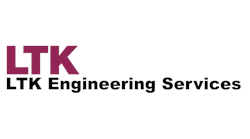The Southeastern Pennsylvania Transportation Authority welcomed the industry to Philadelphia this weekend for the American Public Transportation Association’s Rail Conference. Sunday’s host forum, “The Future of Fare Technologies” focused on SEPTA’s implementation of a new open payment fare system anticipated to be in operation by the end of next year.
Jeffrey Knueppel, deputy general manager, SEPTA, gave an overview of how they’ve gotten to where they’re at. He said, “It’s tough, but we know it’s going to be worth it.” Creating the vision started with looking for a system that would accept common forms of payment, create a seamless payment system across all modes, dramatically improve customer convenience and a system that would act as an agent of change.
The system will accept smart cards, contactless bank cards, government-issued benefit cards and cash.
A lot of work has already been done in house to prepare for the transition. 1,800 fareboxes have been overhauled, five zone offices have been constructed, they’ve extended power to fare lines and vending, there have been elevator control modifications made and railroad station waiting room security enhanced.
Critical to the implementation will be education and communication to both employees and riders. A new training center has been established to provide the needed training to staff and specialized communication skills will enhance customer skills and de-escalate any situations that arise from the change.
While there is a lot of fear in the change until people see it, there are a lot of mode-specific materials and videos in process to ensure that all messaging is on track and reaching all audiences. SEPTA is also continually seeking input through broad surveys and smaller focus groups.
SEPTA Chief Officer, New Payment Technologies John McGee Jr. said there were two drivers for this system. One is that the time was right for the switch to this technology and second was that they were convinced it could be done. He said they developed a strong strategy as they needed to be able to prioritize those efforts that could potentially delay the rollout.
“It’s a massive undertaking,” he stressed. “Our goal is to renew the fare payment for everything.” With such an extensive project, they have two other partners involved in the process, Xerox and LTK Engineering. “We rely on that outside expertise.”
SEPTA Assistant General Manager, Operations, Ron Hopkins talked about how challenges of the rollout will be different depending on the mode. When it comes to buses and trolleys, those will probably be the least impacted because at the end of the day, there’s no real difference from an operator standpoint. And with no more paper transfers, it will probably be the easiest.
The subway stations would be the next most challenging with close to 300,000 people going through 50 stations. There will be changes for the customer so there is a lot of outreach needed to get people comfortable and familiar.
The most challenging mode will be the railroad because out of the 156 stations, the five where the majority of people enter the system will be gated. “We’re comfortable with that,” Hopkins said, “But it is a changing culture not having ticket agents behind the window.”
They will still be doing a check of passes on board with hand-held devices and at the beginning there will especially be a lot of validating going on.
Richard Burnfield, SEPTA chief financial officer, said, “A lot of people don’t mind change as long as it doesn’t effect them.” Burnfield talked about the different fare pricing and the hearing process on developing calendar rates.
With such a change for so many of the employees, it will be a challenging process but he said there are financial opportunities. Some of the folks that collected cash and sat in a collection room sorting dollar bills won’t be necessary and there will be reconfiguring of jobs to meet some of the unmet needs of the authority to gain efficiencies.
There are 26 legacy systems that are being integrated, said ACS, A Xerox Company’s Vice President, Fare Payment Solutions Steve Frazzini. With a challenging schedule, he stressed a critical challenge they are facing together is marketing, education, outreach and training for employees and customers.




